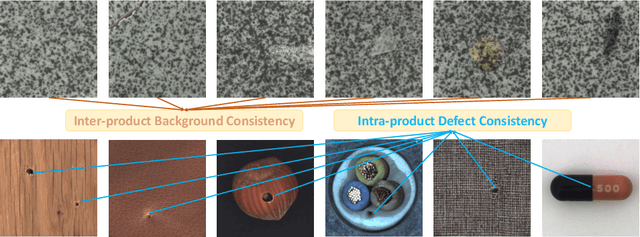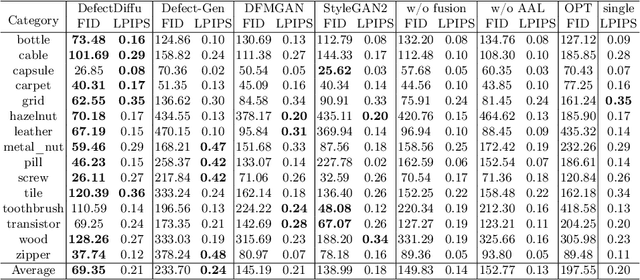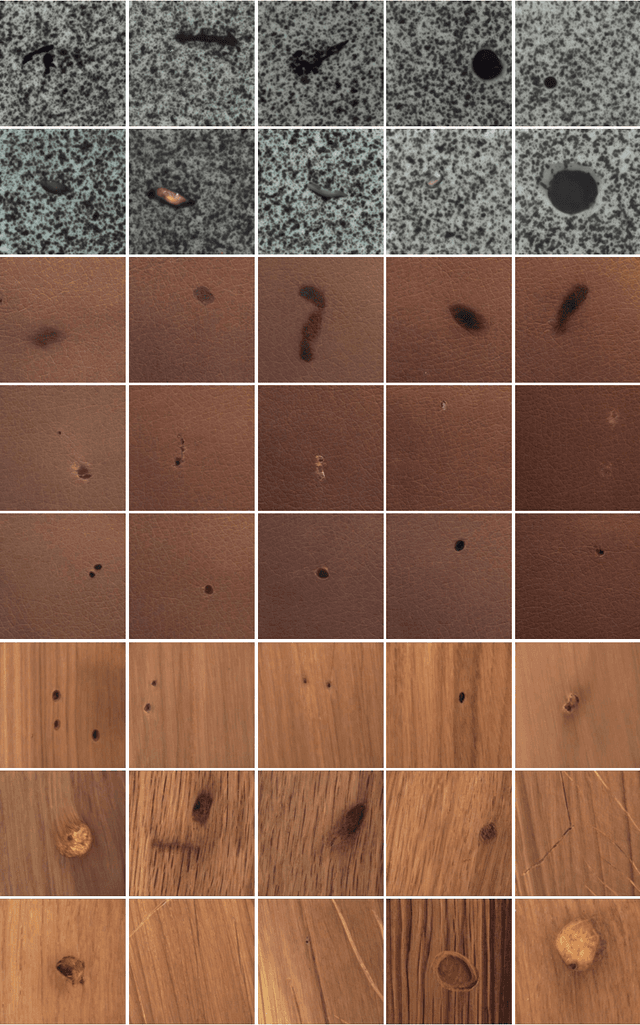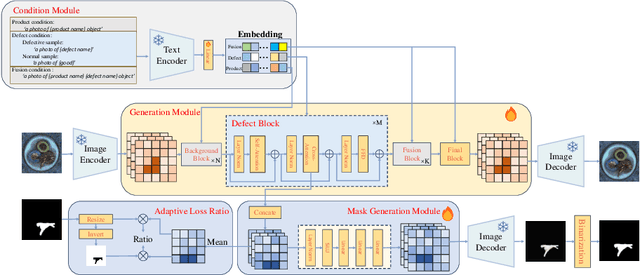Fei Shen
SceneDecorator: Towards Scene-Oriented Story Generation with Scene Planning and Scene Consistency
Oct 27, 2025Abstract:Recent text-to-image models have revolutionized image generation, but they still struggle with maintaining concept consistency across generated images. While existing works focus on character consistency, they often overlook the crucial role of scenes in storytelling, which restricts their creativity in practice. This paper introduces scene-oriented story generation, addressing two key challenges: (i) scene planning, where current methods fail to ensure scene-level narrative coherence by relying solely on text descriptions, and (ii) scene consistency, which remains largely unexplored in terms of maintaining scene consistency across multiple stories. We propose SceneDecorator, a training-free framework that employs VLM-Guided Scene Planning to ensure narrative coherence across different scenes in a ``global-to-local'' manner, and Long-Term Scene-Sharing Attention to maintain long-term scene consistency and subject diversity across generated stories. Extensive experiments demonstrate the superior performance of SceneDecorator, highlighting its potential to unleash creativity in the fields of arts, films, and games.
CharacterShot: Controllable and Consistent 4D Character Animation
Aug 10, 2025Abstract:In this paper, we propose \textbf{CharacterShot}, a controllable and consistent 4D character animation framework that enables any individual designer to create dynamic 3D characters (i.e., 4D character animation) from a single reference character image and a 2D pose sequence. We begin by pretraining a powerful 2D character animation model based on a cutting-edge DiT-based image-to-video model, which allows for any 2D pose sequnce as controllable signal. We then lift the animation model from 2D to 3D through introducing dual-attention module together with camera prior to generate multi-view videos with spatial-temporal and spatial-view consistency. Finally, we employ a novel neighbor-constrained 4D gaussian splatting optimization on these multi-view videos, resulting in continuous and stable 4D character representations. Moreover, to improve character-centric performance, we construct a large-scale dataset Character4D, containing 13,115 unique characters with diverse appearances and motions, rendered from multiple viewpoints. Extensive experiments on our newly constructed benchmark, CharacterBench, demonstrate that our approach outperforms current state-of-the-art methods. Code, models, and datasets will be publicly available at https://github.com/Jeoyal/CharacterShot.
UniMC: Taming Diffusion Transformer for Unified Keypoint-Guided Multi-Class Image Generation
Jul 03, 2025Abstract:Although significant advancements have been achieved in the progress of keypoint-guided Text-to-Image diffusion models, existing mainstream keypoint-guided models encounter challenges in controlling the generation of more general non-rigid objects beyond humans (e.g., animals). Moreover, it is difficult to generate multiple overlapping humans and animals based on keypoint controls solely. These challenges arise from two main aspects: the inherent limitations of existing controllable methods and the lack of suitable datasets. First, we design a DiT-based framework, named UniMC, to explore unifying controllable multi-class image generation. UniMC integrates instance- and keypoint-level conditions into compact tokens, incorporating attributes such as class, bounding box, and keypoint coordinates. This approach overcomes the limitations of previous methods that struggled to distinguish instances and classes due to their reliance on skeleton images as conditions. Second, we propose HAIG-2.9M, a large-scale, high-quality, and diverse dataset designed for keypoint-guided human and animal image generation. HAIG-2.9M includes 786K images with 2.9M instances. This dataset features extensive annotations such as keypoints, bounding boxes, and fine-grained captions for both humans and animals, along with rigorous manual inspection to ensure annotation accuracy. Extensive experiments demonstrate the high quality of HAIG-2.9M and the effectiveness of UniMC, particularly in heavy occlusions and multi-class scenarios.
R-Genie: Reasoning-Guided Generative Image Editing
May 23, 2025Abstract:While recent advances in image editing have enabled impressive visual synthesis capabilities, current methods remain constrained by explicit textual instructions and limited editing operations, lacking deep comprehension of implicit user intentions and contextual reasoning. In this work, we introduce a new image editing paradigm: reasoning-guided generative editing, which synthesizes images based on complex, multi-faceted textual queries accepting world knowledge and intention inference. To facilitate this task, we first construct a comprehensive dataset featuring over 1,000 image-instruction-edit triples that incorporate rich reasoning contexts and real-world knowledge. We then propose R-Genie: a reasoning-guided generative image editor, which synergizes the generation power of diffusion models with advanced reasoning capabilities of multimodal large language models. R-Genie incorporates a reasoning-attention mechanism to bridge linguistic understanding with visual synthesis, enabling it to handle intricate editing requests involving abstract user intentions and contextual reasoning relations. Extensive experimental results validate that R-Genie can equip diffusion models with advanced reasoning-based editing capabilities, unlocking new potentials for intelligent image synthesis.
IMAGGarment-1: Fine-Grained Garment Generation for Controllable Fashion Design
Apr 17, 2025



Abstract:This paper presents IMAGGarment-1, a fine-grained garment generation (FGG) framework that enables high-fidelity garment synthesis with precise control over silhouette, color, and logo placement. Unlike existing methods that are limited to single-condition inputs, IMAGGarment-1 addresses the challenges of multi-conditional controllability in personalized fashion design and digital apparel applications. Specifically, IMAGGarment-1 employs a two-stage training strategy to separately model global appearance and local details, while enabling unified and controllable generation through end-to-end inference. In the first stage, we propose a global appearance model that jointly encodes silhouette and color using a mixed attention module and a color adapter. In the second stage, we present a local enhancement model with an adaptive appearance-aware module to inject user-defined logos and spatial constraints, enabling accurate placement and visual consistency. To support this task, we release GarmentBench, a large-scale dataset comprising over 180K garment samples paired with multi-level design conditions, including sketches, color references, logo placements, and textual prompts. Extensive experiments demonstrate that our method outperforms existing baselines, achieving superior structural stability, color fidelity, and local controllability performance. The code and model are available at https://github.com/muzishen/IMAGGarment-1.
PrimeK-Net: Multi-scale Spectral Learning via Group Prime-Kernel Convolutional Neural Networks for Single Channel Speech Enhancement
Feb 27, 2025Abstract:Single-channel speech enhancement is a challenging ill-posed problem focused on estimating clean speech from degraded signals. Existing studies have demonstrated the competitive performance of combining convolutional neural networks (CNNs) with Transformers in speech enhancement tasks. However, existing frameworks have not sufficiently addressed computational efficiency and have overlooked the natural multi-scale distribution of the spectrum. Additionally, the potential of CNNs in speech enhancement has yet to be fully realized. To address these issues, this study proposes a Deep Separable Dilated Dense Block (DSDDB) and a Group Prime Kernel Feedforward Channel Attention (GPFCA) module. Specifically, the DSDDB introduces higher parameter and computational efficiency to the Encoder/Decoder of existing frameworks. The GPFCA module replaces the position of the Conformer, extracting deep temporal and frequency features of the spectrum with linear complexity. The GPFCA leverages the proposed Group Prime Kernel Feedforward Network (GPFN) to integrate multi-granularity long-range, medium-range, and short-range receptive fields, while utilizing the properties of prime numbers to avoid periodic overlap effects. Experimental results demonstrate that PrimeK-Net, proposed in this study, achieves state-of-the-art (SOTA) performance on the VoiceBank+Demand dataset, reaching a PESQ score of 3.61 with only 1.41M parameters.
Long-Term TalkingFace Generation via Motion-Prior Conditional Diffusion Model
Feb 13, 2025Abstract:Recent advances in conditional diffusion models have shown promise for generating realistic TalkingFace videos, yet challenges persist in achieving consistent head movement, synchronized facial expressions, and accurate lip synchronization over extended generations. To address these, we introduce the \textbf{M}otion-priors \textbf{C}onditional \textbf{D}iffusion \textbf{M}odel (\textbf{MCDM}), which utilizes both archived and current clip motion priors to enhance motion prediction and ensure temporal consistency. The model consists of three key elements: (1) an archived-clip motion-prior that incorporates historical frames and a reference frame to preserve identity and context; (2) a present-clip motion-prior diffusion model that captures multimodal causality for accurate predictions of head movements, lip sync, and expressions; and (3) a memory-efficient temporal attention mechanism that mitigates error accumulation by dynamically storing and updating motion features. We also release the \textbf{TalkingFace-Wild} dataset, a multilingual collection of over 200 hours of footage across 10 languages. Experimental results demonstrate the effectiveness of MCDM in maintaining identity and motion continuity for long-term TalkingFace generation. Code, models, and datasets will be publicly available.
DVP-MVS: Synergize Depth-Edge and Visibility Prior for Multi-View Stereo
Dec 16, 2024Abstract:Patch deformation-based methods have recently exhibited substantial effectiveness in multi-view stereo, due to the incorporation of deformable and expandable perception to reconstruct textureless areas. However, such approaches typically focus on exploring correlative reliable pixels to alleviate match ambiguity during patch deformation, but ignore the deformation instability caused by mistaken edge-skipping and visibility occlusion, leading to potential estimation deviation. To remedy the above issues, we propose DVP-MVS, which innovatively synergizes depth-edge aligned and cross-view prior for robust and visibility-aware patch deformation. Specifically, to avoid unexpected edge-skipping, we first utilize Depth Anything V2 followed by the Roberts operator to initialize coarse depth and edge maps respectively, both of which are further aligned through an erosion-dilation strategy to generate fine-grained homogeneous boundaries for guiding patch deformation. In addition, we reform view selection weights as visibility maps and restore visible areas by cross-view depth reprojection, then regard them as cross-view prior to facilitate visibility-aware patch deformation. Finally, we improve propagation and refinement with multi-view geometry consistency by introducing aggregated visible hemispherical normals based on view selection and local projection depth differences based on epipolar lines, respectively. Extensive evaluations on ETH3D and Tanks & Temples benchmarks demonstrate that our method can achieve state-of-the-art performance with excellent robustness and generalization.
Lesion-aware network for diabetic retinopathy diagnosis
Aug 14, 2024Abstract:Deep learning brought boosts to auto diabetic retinopathy (DR) diagnosis, thus, greatly helping ophthalmologists for early disease detection, which contributes to preventing disease deterioration that may eventually lead to blindness. It has been proved that convolutional neural network (CNN)-aided lesion identifying or segmentation benefits auto DR screening. The key to fine-grained lesion tasks mainly lies in: (1) extracting features being both sensitive to tiny lesions and robust against DR-irrelevant interference, and (2) exploiting and re-using encoded information to restore lesion locations under extremely imbalanced data distribution. To this end, we propose a CNN-based DR diagnosis network with attention mechanism involved, termed lesion-aware network, to better capture lesion information from imbalanced data. Specifically, we design the lesion-aware module (LAM) to capture noise-like lesion areas across deeper layers, and the feature-preserve module (FPM) to assist shallow-to-deep feature fusion. Afterward, the proposed lesion-aware network (LANet) is constructed by embedding the LAM and FPM into the CNN decoders for DR-related information utilization. The proposed LANet is then further extended to a DR screening network by adding a classification layer. Through experiments on three public fundus datasets with pixel-level annotations, our method outperforms the mainstream methods with an area under curve of 0.967 in DR screening, and increases the overall average precision by 7.6%, 2.1%, and 1.2% in lesion segmentation on three datasets. Besides, the ablation study validates the effectiveness of the proposed sub-modules.
Few-shot Defect Image Generation based on Consistency Modeling
Aug 01, 2024



Abstract:Image generation can solve insufficient labeled data issues in defect detection. Most defect generation methods are only trained on a single product without considering the consistencies among multiple products, leading to poor quality and diversity of generated results. To address these issues, we propose DefectDiffu, a novel text-guided diffusion method to model both intra-product background consistency and inter-product defect consistency across multiple products and modulate the consistency perturbation directions to control product type and defect strength, achieving diversified defect image generation. Firstly, we leverage a text encoder to separately provide consistency prompts for background, defect, and fusion parts of the disentangled integrated architecture, thereby disentangling defects and normal backgrounds. Secondly, we propose the double-free strategy to generate defect images through two-stage perturbation of consistency direction, thereby controlling product type and defect strength by adjusting the perturbation scale. Besides, DefectDiffu can generate defect mask annotations utilizing cross-attention maps from the defect part. Finally, to improve the generation quality of small defects and masks, we propose the adaptive attention-enhance loss to increase the attention to defects. Experimental results demonstrate that DefectDiffu surpasses state-of-the-art methods in terms of generation quality and diversity, thus effectively improving downstream defection performance. Moreover, defect perturbation directions can be transferred among various products to achieve zero-shot defect generation, which is highly beneficial for addressing insufficient data issues. The code are available at https://github.com/FFDD-diffusion/DefectDiffu.
 Add to Chrome
Add to Chrome Add to Firefox
Add to Firefox Add to Edge
Add to Edge